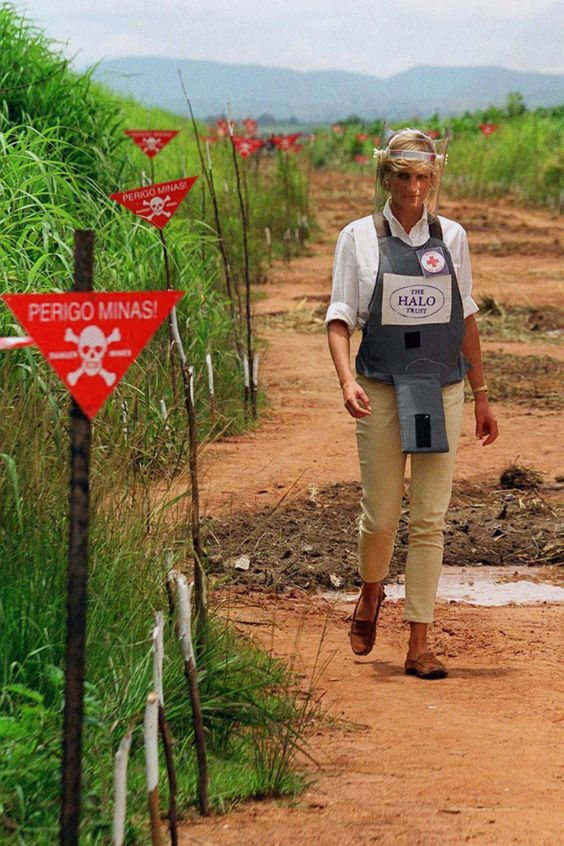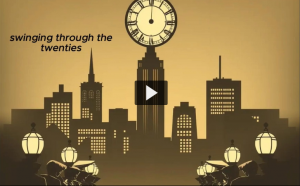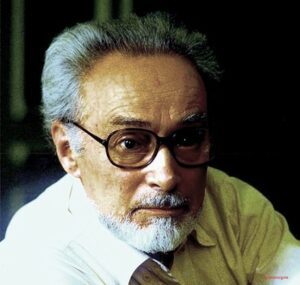Picture a princess. What image comes to your mind? Something out of a Disney movie, right? Carriages, designer dresses, star-studded balls, and monumental weddings are some of the aspects that depict the mainstream image of royalty. Now picture a princess…in a war zone. In early 1997, Princess Diana of Wales found herself standing beneath the pungent Angolan sun, away from the luxuries and gala events, where she cast off her royal attire for protective body armor and a visor. Princess Diana of Wales shed a momentous light on one of the most unnoticed atrocities of the African continent: landmines. That single action of hers, on that day, still resonates for us today, long after her untimely death.
Darkness had fallen on the lives of many innocent African communities. As disputes between villages turned into wars, public areas were replete with tragedy and death. In the mid-1990’s, three-dollar weapons called landmines were terrorizing the innocent—claiming twelve thousand civilian lives and causing the highest number of amputees in the world. Landmines are placed during these armed disputes, concealed underground to destroy or disable enemy targets.1 Although the armed combats in Angola had ended, the war “debris” continued to threaten people’s safety. People were dying regularly from leftover landmines, but few outside Angola knew anything about them. These mines would remain “live” for years, even decades, waiting for unsuspecting victims, as per their design, causing unimaginable suffering and pain.2

The African people were in desperate need of a solution. They needed a defender. Their cry for help was heard, reaching the gates of Kensington Palace. It was none other than Princess Diana—keen philanthropist and self-proclaimed Queen of Hearts—whose life purpose had become to shed a humane light on controversial issues such as AIDS and homelessness. “I’d read the statistics that Angola has the highest percentage of amputees anywhere in the world. That one person in every 333 had lost a limb, most of them through land mine explosion.”3 The moment Princess Diana became aware of this neglected tragedy, she knew exactly what she needed to do: take immediate action. “I have all this media interest, so let’s take it somewhere where they can be positive and embrace a situation which is distressing like this.”3 In early January 1997, she flew to Angola along with the Red Cross and a BBC camera crew.
A fearless Diana put herself in the midst of one of the most dangerous places in the world, thousands of miles away from the royal guard, protected solely by a riot helmet and a flak jacket given to her. Accompanied by local anti-landmine activists, she was taken to see a land-mine clearing operation in Huambo, central Angola.5 This was a royal, who spent a large part of her life in luxurious settings being served by others, who was personally stepping into filthy fields to deactivate mines, serving those whose lives were shattered by the deadly weapons. As she pushed the button to detonate a single mine, she uttered the words “One down, 17 million to go.”6

After the cameras stopped rolling, Diana didn’t. The fight to ban antipersonnel landmines became a personal crusade, one that would fill the last year of her life.7 She made this clear in the last speech she ever delivered, stating, “The more expeditiously we can end this plague on earth caused by the landmine, the more readily can we set about the constructive tasks to which so many give their hand in the cause of humanity.”8 This public light shed by Diana brought nothing but success, influencing countries to come together to pledge millions of dollars to tackle the destruction caused by landmines, as well as bringing 122 governments from around the world to contribute to the passage of the Ottawa Mine Treaty. Landmines are still an issue of global concern, but Diana remains the most influential face of anti-landmine activism.
- Isebill V. Gruhn, “Land Mines: An African Tragedy,” Journal of Modern African Studies, no. 4 (December 1996): 688. ↵
- Stuart Maslen, Mine Action after Diana: Progress in the Struggle Against Landmines (London: Pluto Press, 2004), 15. ↵
- Heart of the Matter: Diary of a Princess, directed by Karina Brennan (UK: BBC, 1997). ↵
- Heart of the Matter: Diary of a Princess, directed by Karina Brennan (UK: BBC, 1997). ↵
- Encyclopedia of Espionage, Intelligence and Security, 2004, s.v. “Unexploded Ordnance and Mines,” by Mike Lambert. ↵
- Johnna Rizzo, “How Princess Diana Crippled The Case For Land Mines,” Newsweek, Oct. 24, 2015. ↵
- Johnna Rizzo, “How Princess Diana Crippled The Case For Land Mines,” Newsweek, Oct. 24, 2015. ↵
- Diana, Princess of Wales, “Responding To Landmines: A Modern Tragedy And It’s Consequences” (keynote address, Mines Advisory Group and the Landmine Survivors Network, London, June 12, 1997). ↵




82 comments
Gabriela Serrato
Although I love all of the Disney princesses, it is so refreshing to read a true princess tale that inspires me so deeply. Princess Diana is a gem, and proved to be in so many ways. She cared for others, not only herself. I find that her amiable qualities are what make her so loved and missed. All I hope to do is help others throughout my life, but compared to Princess Diana, what I do will be small. But I am inspired to do more now. I find it so important that a woman of her power, including everyone that has her amount of influence whether that be a man or a woman, do this type of work.
Abigale Carney
This was such an interesting article! When describing royalty, I do picture the Disney movies, and seeing Princess Diana walk through a war zone was shocking. The statistical fact that 1 in every 333 people in Angola lost a limb to an explosion was astonishing. Princess Diana’s brave and kind efforts to help those in need are truly expressed throughout this article.
Alondra Aviles
The introduction was very thought provoking. Although it is pretty obvious that modern day monarchies don’t at all look like disney fairy tales, it’s pretty difficult to imagine any type of royalty stepping out into unprotected areas. Let alone areas that are complete with dismantled land mines and war zones. Princess Diana was known to be a popular humane figure, she was a very inspirational political figure. She consistently gave herself to help others in need performing tasks that a “princess” wouldn’t or shouldn’t do. Regardless, Princess Diana’s time was cut very short but her presence still remains.
Rebekah Esquivel
I found this article very interesting. I loved the introduction about comparing the thoughts that come to mind when we think of royalty and then jumping into what Princess Diana did. It takes a really brave person to fight for something like this and leave their comfort zone in order to help others. I found it very shocking how 1 in every 333 people in Angola lost a limb due to an explosion. That’s so sad to hear and i’m glad that someone with as much influence as Princess Diana had stepped up in order to help better these people and the lives they lived.
Marco Picardo
This article struck me from the beginning. To hear that Angola had a rate of one person in every 333 losing a limb was quite shocking to hear. Her going out of her way to shed light on the severity of this issue led to countries coming together to pledge millions of dollars. Her presence alone helped Angola. I would have never known about this event if I didn’t come across it here.
Karina Nanez
Princess Diana has always been my favorite royal and I have always adored her passion for human rights. She was never one to shy away from “dirty work” in order to show how important certain issues were. And As you said, walking out into a live minefield wearing minimal protection is an incredibly brave and risky thing to do, but Diana didn’t care because she had a point to make and potential lives to save.
Alexandria Martinez
This was a wonderful article, it was very well written and informative. Diana always did so much for people and it wasn’t just so she could show the public that she was a good person, it was actually genuine. This one act is just one example of how she was, how she loved to help people and give back to not only her community but people from far away.
Amber Aragon Alvarado
Princess Diana is the perfect example of looks aren’t everything in royalty. To be royal is to be a leader as well. Learning about the way she helped with landmines really demonstrates the powerful activist she was. I grew up knowing that she was a member of the British royal family as the first wife of Charles. I didn’t know that she took the initiative to help with the landmines. It’s amazing learning about someone who made such an impact on many peoples lives. I enjoyed reading this article, it was well written!
Alexis Soto
This was a well-written article with a great intro. Right away I was intrigued by what the topic might be. I was able to grasp the events in Angola and eventually how Princess Diana became the face of anti-landmine activisim. I had no real knowledge of who Princess Diana was or her work. It was worth the read.
Alejandra Mendez
This article and its story about Princess Diana’s actions is so admirable and motivational. A common thing that many people with authority and power fail to do is show their humbleness and care for others who aren’t as lucky to have many privileges that people have and take advantage of. Princess Diana used her power and famous platform to help those and be with those who could not help themselves. She is an inspiration to not only others with high power such as hers to take action but also inspires people in general to take action. All it takes is one person to help and open the eyes of others and that is exactly what she did.